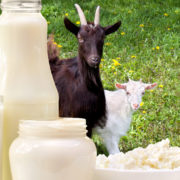In the next 10 years, Chinese need healthier food and more nutritionists
Recently, the Chinese government issued the “Healthy China Action (2019-2030)”, and health topics have once again become the focus of public attention. The Office of the Health China Action Promotion Committee held a press conference in Beijing to interpret the situation regarding the reasonable dietary actions of the “Healthy China Action”.
In recent years, the nutritional health status of Chinese residents has improved significantly, but they still face problems such as insufficient nutrition and excess, and frequent nutrition-related diseases. The intake of oil, salt and sugar in Chinese residents is high.
The resulting problem of overweight and obesity has become increasingly prominent. In 2012, the overweight rate of Chinese adults aged 18 and over in the country was 30.1%, and the obesity rate was 11.9%, which was 32.0% and 67.6% higher than that in 2002; 6-17 years old. The overweight rate of children and adolescents was 9.6%, and the obesity rate was 6.4%, which was doubled and 3 times compared with 2002.
In addition to the overweight and obesity problems, some people face another problem: undernutrition. The data show that from 2010 to 2012, the adult malnutrition rate in China was 6%; in 2013, the growth retardation rate of children under 5 years old was 8.1%, and the anemia rate of pregnant women, children and the elderly was still high, calcium, iron, vitamin A, micronutrient deficiencies such as vitamin D still exist, and dietary fibre intake is obviously insufficient.
The government document puts forward the overall goal of the Healthy China Action to 2022 and 2030 and clearly implements 15 special actions. One of the special diet actions is one. Three reductions (salt reduction, oil reduction, and sugar reduction) are the focus of a reasonable diet. The document clearly sets out the goal of three reductions: By 2030, the average daily salt intake of Chinese people should not exceed 5 grams, and the daily intake of edible oil for adults should not exceed 25-30 grams. The amount does not exceed 25 grams.
It is worth mentioning that the action clearly proposes to promote the use of healthy “small three pieces” (a limited salt spoon, a limited oil pot and a healthy waist ruler) to increase the household penetration rate and encourage professional industry organizations to guide the correct use of the family.
In addition, it is necessary to improve the oil, salt and sugar packaging standards, and on the outer packaging, it is recommended to eat a reasonable amount of oil, salt and sugar per person per day. Shops (supermarkets) are encouraged to open low-fat, low-salt, low-sugar food counters.
In terms of reducing sugar, the action is particularly pointed out, the government should speed up research and development standards to limit the production and sales of high-sugar foods.
In view of the problem of excessive intake of sugar in children, the action is also clear. It is necessary to research and formulate a limited guide for the addition of sucrose in Chinese children as soon as possible, and advocate the substitution of natural sweet substances and sweetener drinks.
In the action announced this time, it is also proposed to formulate the implementation of the nutritionist system. Nutritionists are provided in collective feeding units such as kindergartens, schools, old-age institutions, hospitals, etc., and nutrition instructors are provided in the community.
The nutrition instructor is the new word proposed this time, mainly in the community. It is hoped that the nutrition instructor is nutrition and medical background. Professionals with practical work experience, after a certain training, have dietary nutrition knowledge and skills, can provide nutrition education, dietary guidance and balanced nutrition guidance, and can solve practical problems in Chinese communities.
Resource: China News



